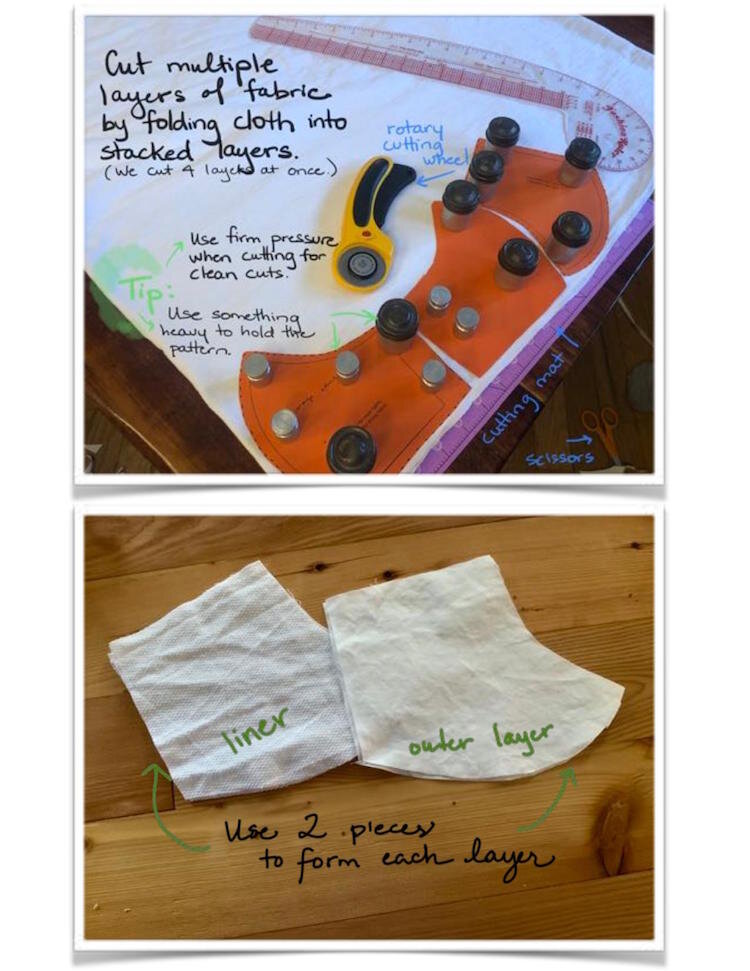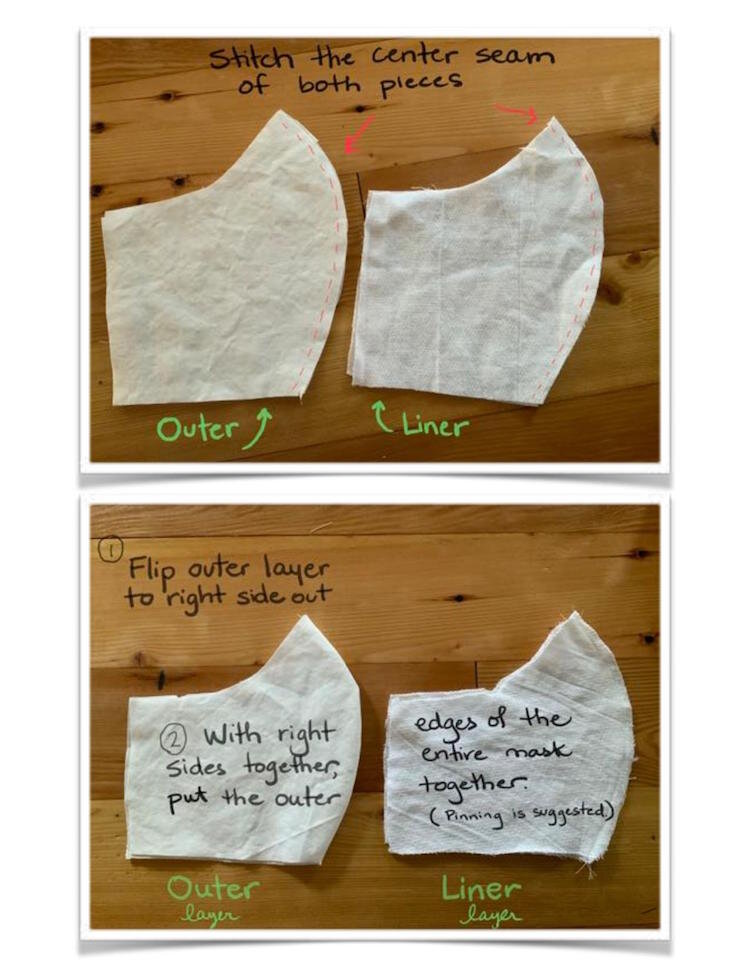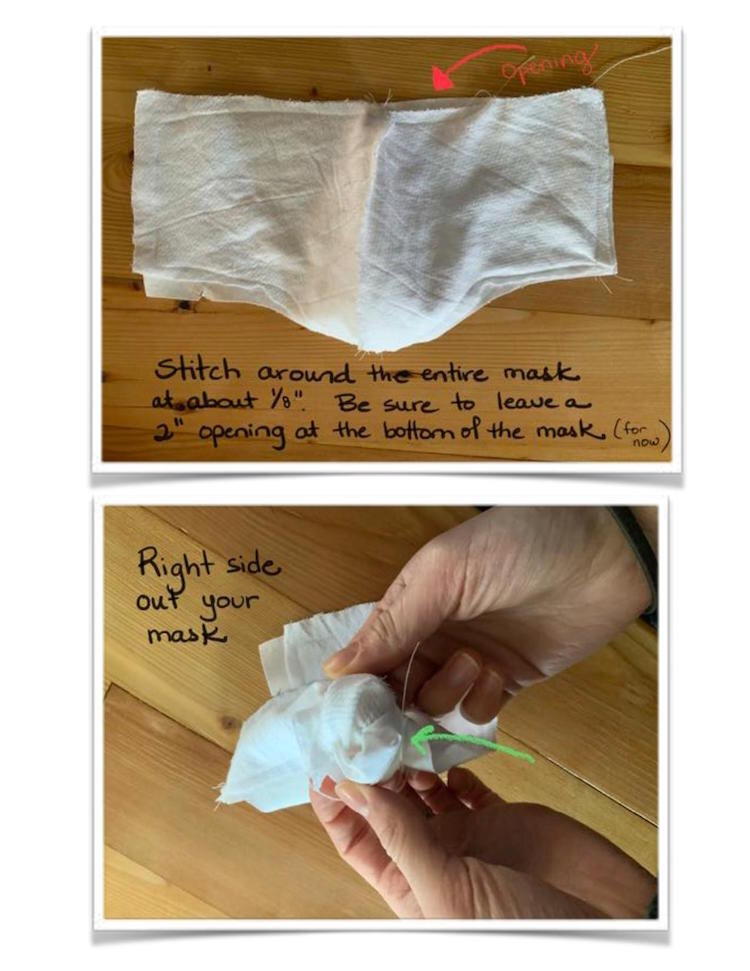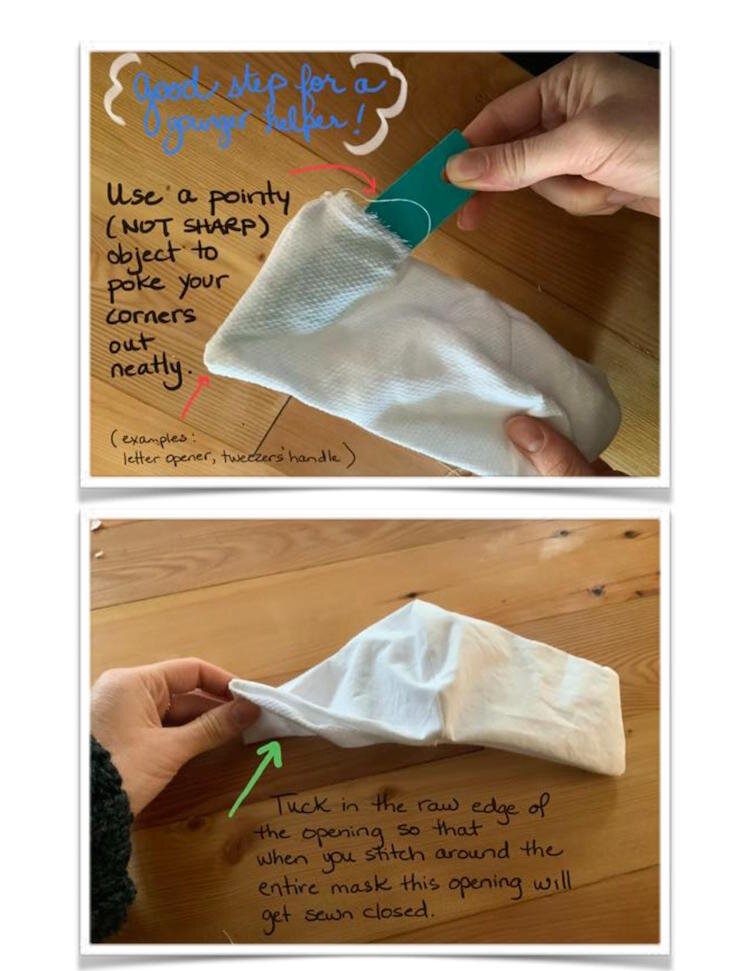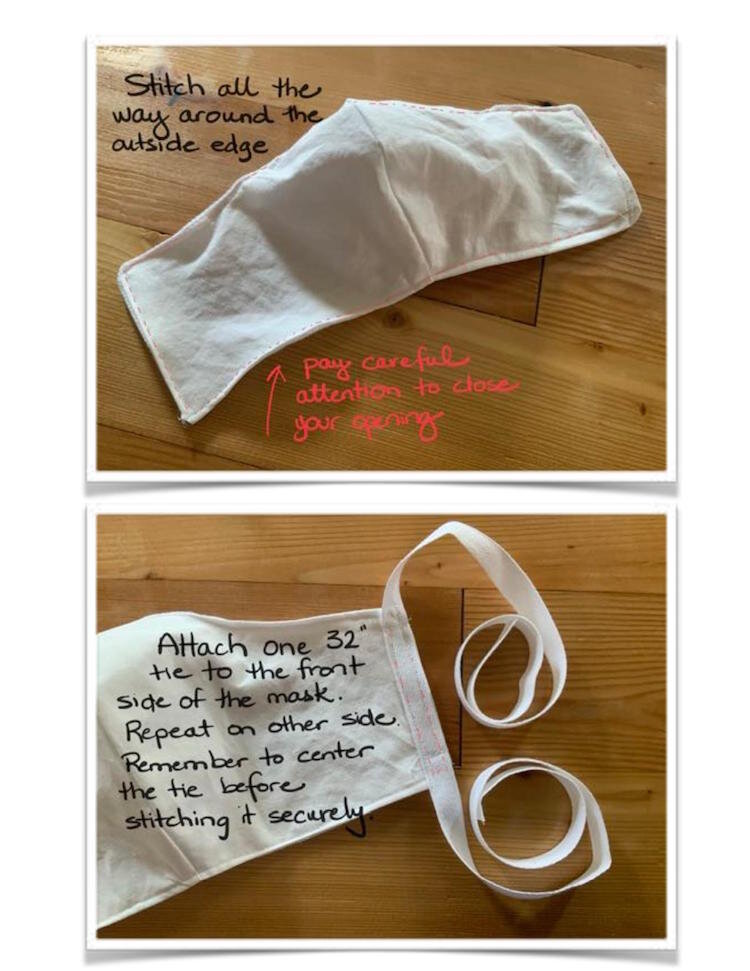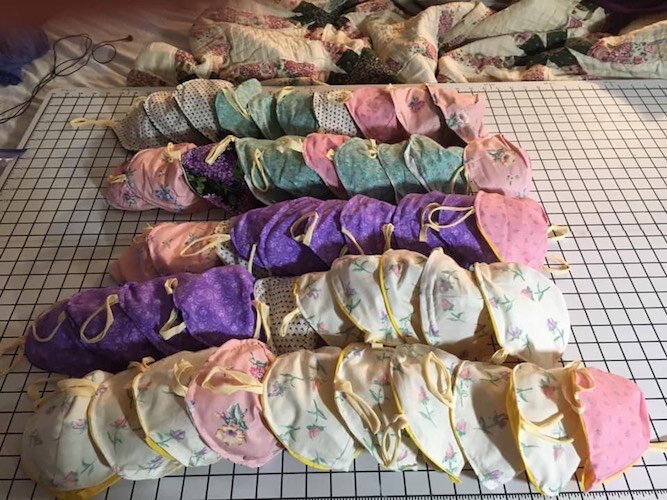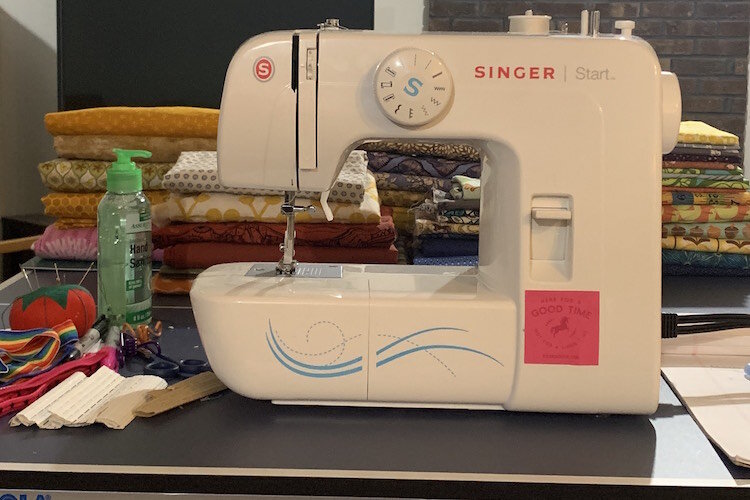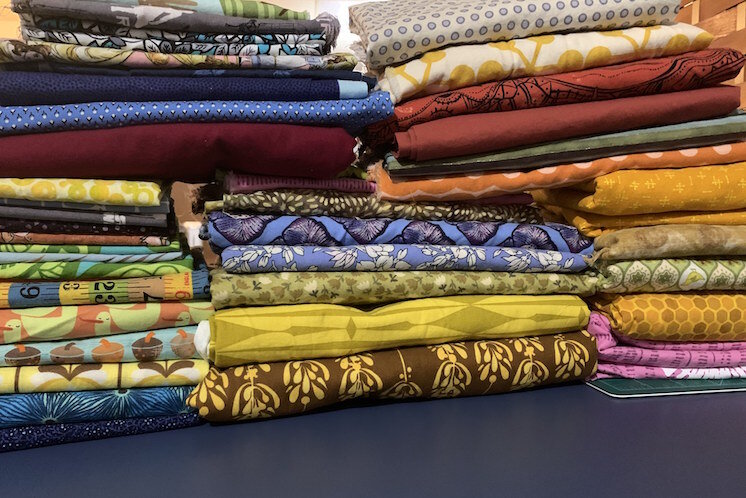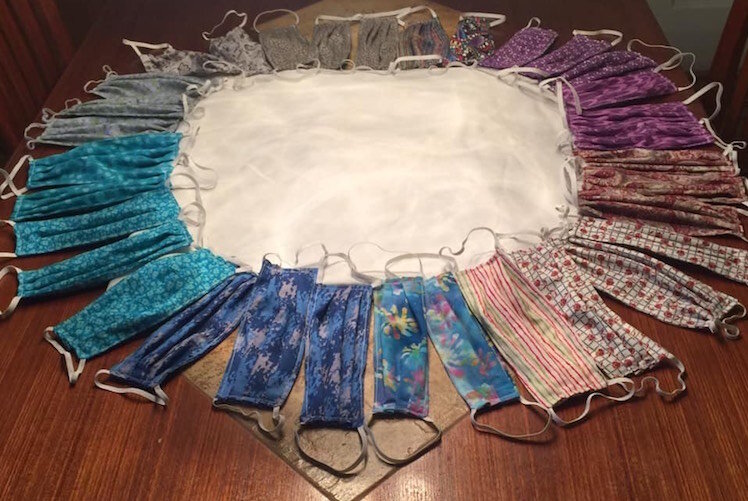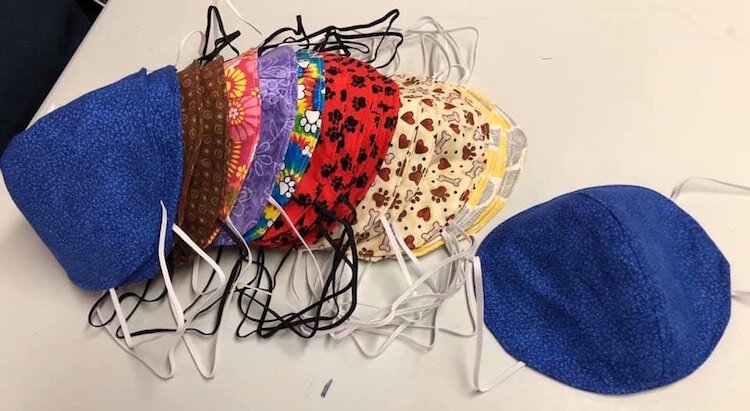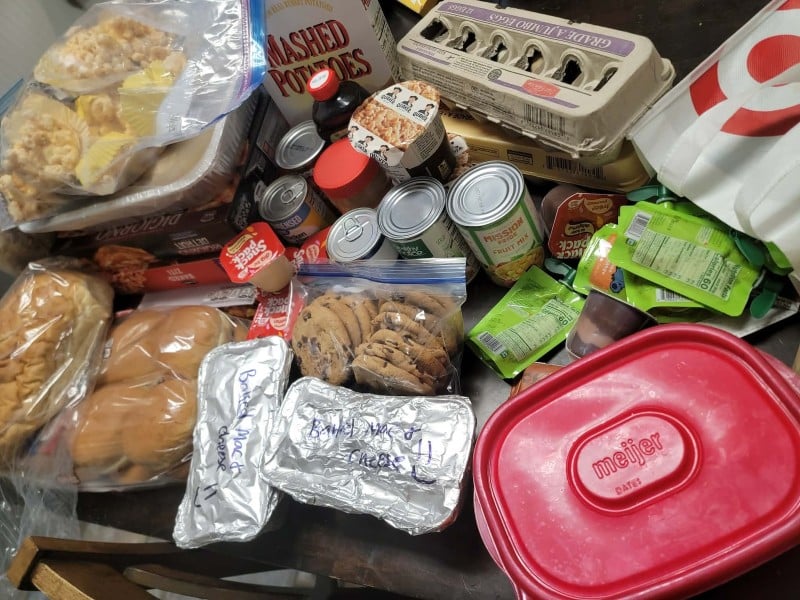The power of community organizing: Sewers are stitching up some great community spirit in Kalamazoo
On Wednesday, March 24 Bronson Methodist Hospital put out a call for masks. Sewers across Kalamazoo and beyond are on it.
Megan Maddock of Kalamazoo got a sewing machine for Christmas last year but has not really learned to use it.
Each week, she had been fixing by hand the torn khakis of one or two of her 9th- and 10th-grade-level English students at the Kalamazoo County Juvenile Home.
A three-year veteran of special education, she was sure the sewing machine would make the repair work faster. But when schools closed two weeks ago to minimize the spread of the coronavirus, not much had improved in terms of her speed, she says.
So during her mandated layoff from teaching, the 28-year-old Kalamazoo woman cuts patterns and pins together most of the medical safety masks she helps make for health care professionals. She transports them to another woman for most of the sewing work. And she is thrilled by the work she is doing.
“I miss teaching,” Maddock says. “It’s what I do. I love my job. But this has helped give me a sense of purpose during our quarantine time. It has been great for my mental health.”
She is part of the Southwest Michigan Med Mask Project, a growing group of area people who are volunteering to produce handmade personal protective equipment for frontline workers in the medical and patient care community. The project was launched on March 20 and its efforts are almost entirely coordinated via a Facebook page, SWMI Med Mask.
Project volunteers are attempting to fill requests they receive from Kalamazoo County officials, area hospitals and others in the patient-care community for specific washable mask patterns.
“This is definitely a solutions-based group,” says Maddock, who has otherwise been spending most of her days since the coronavirus layoff with her husband, an equity and inclusion specialist in human resources for Bell’s Brewery, and their two dogs.
“You don’t see a lot of chatter on it (the Facebook page),” she says. “Our goal is to connect people with each other to produce as many quality masks as possible and get them to the organizations that need them.”
She says she first heard of the project from a Facebook friend who shared that Residential Opportunities Inc. (the operator of a chain of care facilities for adults with developmental disabilities) was looking for sewn masks.
“So I jumped online to see what patterns are being used,” Maddock says.
She then saw that the woman who had started the Facebook page was looking for administrators to help monitor the page, answer questions for people, and coordinate requests from health care providers. And she joined.
About 1,200 people are listed online as part of the group. But Maddock estimates that there are about 100 people making masks. Through Wednesday night (March 25), she estimates that project members had provided about 1,000 masks to area facilities that have requested them. She says that does not count items that members have made and donated to other places throughout Southwest Michigan.
“I actually have realized I am not a very fast sewer,” Maddock says. “So I have been cutting patterns and pinning elastic and dropping off my cut patterns and giving them to her.”
“Her” is a retired opthalmologist that Maddock says she found through a stream of Facebook messages with another sewer. She has never actually met the woman who completes her work.
In keeping with anti-virus protocols, Maddock and other project participants do “porch” drop-offs and pick-ups to avoid the potential of spreading harmful germs.
“We encourage people to do porch pickups only – a plastic bag on the porch,” she says.
Maddock chats once a day online with the woman who started the SWMI Med Mask Facebook page and three other page administrators. But she’s never met any of them face-to-face.
“We’re acting as a source for people to ask questions, exchange or offer supplies (and) coordinate teams,” Maddock says. “We have some teams of people who will cut and pin fabric and drop it off with someone who is a better sewer.”
With a laugh, she says, “We have a sort of an assembly line, but quarantined.”
Of the effort, she says, “I think it shows the power of community organizing. And just how quickly people can come together to find solutions.”
Bronson calls for Masks
On March 25 Bronson Methodist Hospital released the following call for masks:
COVID-19 is in our community. Our hospitals face critical shortages of supplies including face masks.
WE NEED YOU to help flatten the COVID-19 curve in our community ASAP. Unfortunately this is not the time for a large group social project in a school gym or church basement. However, each of us working at home can together make a big difference, one personal protection mask at a time. The main purposes of these homemade masks is to create a barrier between the wearer’s face and a direct cough or sneeze and to create a personal skin barrier for the wearer in the likely event that they unconsciously reach and touch their own nose or mouth (eyes will be protected by glasses or safety googles). They will NOT be medical grade but this is an unprecedented situation and when existing supplies are exhausted, every useful bit will count.
DONATIONS will be accepted across the area beginning Monday, March 23, 2020. (If you live outside of SWMI check with your local hospital for their needs. There is a nationwide supply shortage.) Please refer to this link for safe drop off locations. All cloth masks will be washed by the hospital prior to distribution. Please keep in mind that these masks will be used over and over and washed after each use so good quality cotton will work best.
Read on for a Bronson approved mask design. We hope that you can follow the instructions or feel free to watch the tutorial at the creator’s website. However, we have modified the original design extensively to best meet Bronson’s needs.
If you find another design you prefer to work with feel free to use it. Just remember to stick with cotton, muslin or breathable cotton/poly blend and use ties not elastic for extended use and industrial washing. Thank you in advance for your help.
It is essential that no one involved in the creation, distribution or delivery of new/unused materials or homemade masks have any symptoms of COVID-19 (fever, cough, shortness of breath) or have recently been exposed to anyone experiencing these symptoms or who has been tested positive for COVID-19.
Things to keep in mind:
1. Masks must be able to hold up to commercial washing
2. Masks must not be too heavy or hot on the wearer’s face
3. Adjustable ties allow for better individual comfort
4. Work in batches (cut many, then sew many)
5. Use teamwork with others if they are in your home
6. Anyone of any age and ability can help
7. You are a part of something bigger than you may realize
8. Every mask matters
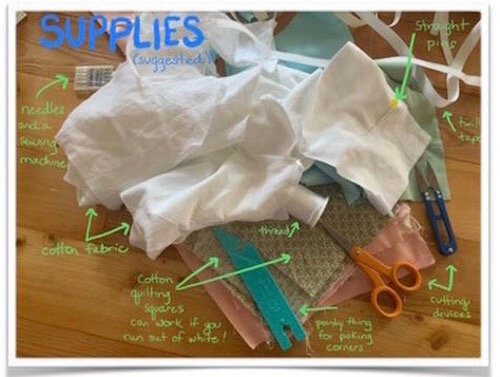
Supplies:
• 100% cotton fabric outer layer if possible (white/ivory, unprinted is best if available), muslin, pillow ticking or cotton/poly blend if breathable (clean cotton bedsheets can be used as long as they are not stained or threadbare/Cotton quilt squares may also be options)
• cotton diaper cloth for interior liner (ideal) or 2nd layer of the cotton outer
layer
• 64 “ cotton twill tape (more about this in pattern if you don’t have it)
• sewing machine
• light-colored thread
• printed mask pattern
• cutting device (scissors, rotary cutter with mat or Cricut/Silhouette craft cutting machines)
Instructions:
• Wash all fabric before cutting it out. (All donated masks will be washed by the hospital before use.)
• Print out the enclosed pattern. Choose either Standard Adult or Large Adult (these two sizes will cover the majority of US adults).
• Print the pattern onto card stock or trace onto cardboard for a more sturdy pattern.
• Cut multiple pieces of the fabric pattern by folding cloth into stacked layers. (We found that we can cut four layers pretty easily with a rotary cutting wheel, much better than with scissors.)
• Weigh the pattern down with heavy bits like lead weights, stones, or knives.
• If you have a Cricut or Silhouette cutting machine, the original designer has a file on her website which you can download to your machine. However, it will only be for the size we call STANDARD ADULT, her large size. Bronson’s staff test fitted that large size and found it to be too small for many. We thus created an expanded size LARGE to meet our local needs.
• If using a printed fabric be very careful to ensure that each layer is mirrored or the print will be on the wrong side. Trust us.
• Use 2 pieces for each layer. (Careful cutting in layers of 2 or 4 really helps the alignment for the next step.)
• Next step: SEW!
• Stack the front faces of the fabric together.
• Stitch the center seam of both pieces.
• Flip the outer layer to right side out.
• Slip outer layer into the liner layer.
• Open up the mask and put the outer edges of the entire mask together (pinning helps).
• Stitch around the entire mask at about 1/8”. Be sure to leave a 2” opening along the bottom of the mask (for now).
• Right side out your mask through that handy opening.
• Poke the corners out with a pointy but not sharp object.
• Tuck the raw edging of the opening in so that as you now sew around the entire mask, you will neatly close up that opening.
• Evenly attach one 32” tie to the front of one side of the mask.
• Repeat the same process for the other side.
• You did it!
• Take your finished mask to a safe, donation drop off location.
